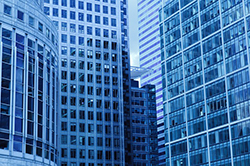 In our nation’s tumultuous environment of skyrocketing unemployment and plummeting home values, saving up for an emergency fund or retirement might be the farthest thing from your mind. Considering the sad state of our economy, most consumers are happy to just make ends meet. Although some economists encourage consumers to spend to stimulate the economy, most financial experts say saving is still as important as ever.
In our nation’s tumultuous environment of skyrocketing unemployment and plummeting home values, saving up for an emergency fund or retirement might be the farthest thing from your mind. Considering the sad state of our economy, most consumers are happy to just make ends meet. Although some economists encourage consumers to spend to stimulate the economy, most financial experts say saving is still as important as ever.
Is saving money a lost art? Recently, Bank of America Merrill Lynch conducted a study to determine whether Americans are saving enough. In the four decades after World War II, the average American saved between 6% and 10% of their after-tax income. However, around 1985, that number started to decline, dropping below an average of zero in 2005. That’s when consumers started spending more than they earned with the help of easily accessible credit cards and loans.
For the most part, the average American has saved less than 3% of their income during the past five years. That number has increased slightly to 4% as gun-shy Americans scramble to save in this depressed economy. However, many economists say that’s still not nearly enough. It almost seems as if saving has become a thing of the past, but consumers run the risk of serious financial turmoil if they don’t start saving for a rainy day. And then there’s the retirement issue. Without a healthy nest egg, far too many retirees will outlive their money.
A mountain of debt. Of course, a lack of savings isn’t our nation’s only financial problem. Most families are facing a mounting load of debt, as well. In 1960, the typical American family’s debt equaled about 55% of their after-tax disposable income. Today, the average debt-to-income ratio (DTI) for a U.S. household is a whopping 125%. Of course that’s better than 2008, when household debt reached an all-time high of 130%.
Financial experts say that a 100% DTI is a healthy debt ratio. Let’s say you and your spouse earn $150,000 a year, but you owe a total of $200,000 on your house, car, student loans and other financial obligations. If you want to reach 100 percent DTI, you should try to pay down your debt by $50,000 to reach a “healthy” DTI.
Slowly rising savings rate. As mentioned, the savings rate has inched up to about 4% recently. Some economists say that as the savings rate continues to slowly rise, U.S. consumers will use about 80% of their savings to pay down debt and the other 20% to invest in interest-earning assets. Although this is certainly a financially responsible move, some experts point out that the U.S. economy depends on consumer spending. Therefore, if consumers stop spending as much and saving more, the economy will not bounce back any time soon.
Based on a study by Federal Reserve economists Reuven Glick and Kevin Lansing, the savings rate would need to climb to 10% within the next eight years for U.S. households to lower their debt to normal levels. Reuven and Lansing say that would shave 0.75 percentage points off economic growth each year, which could lead to a continued depressed economy and a lack of new jobs.
Saving is still important. Regardless of these new theories about “saving too much,” most financial experts say that saving is still critical. After all, your financial well-being depends on it — now and well into the future. Although the idea of saving less and spending more is a popular one, it’s probably not the smartest move for most consumers. First of all, saving is absolutely necessary if you want to ensure a comfortable retirement. Secondly, financial experts say consumers should also save up for an emergency fund. Think about it this way: What would happen if you lost your job tomorrow? What if you suffered from a severe illness and faced thousands of dollars worth of medical bills? Could you afford it? Probably not. And that’s precisely why you should keep between three and six months worth of living expenses in your emergency fund.

 The slow winter season may lead certain employers to lay off employees for a few weeks or months. If you’re affected by a layoff, you could file for unemployment. Understand this coverage and how to file for it so you can receive financial benefits as you wait to return to work.
The slow winter season may lead certain employers to lay off employees for a few weeks or months. If you’re affected by a layoff, you could file for unemployment. Understand this coverage and how to file for it so you can receive financial benefits as you wait to return to work. Although most people think of business places as safe and serene, in fact they’re rife with risks, both inside and outside the building. Security experts recommend taking these safety precautions:
Although most people think of business places as safe and serene, in fact they’re rife with risks, both inside and outside the building. Security experts recommend taking these safety precautions: With the launch of a new year, you may resolve to improve your career and expand your skills, mentor someone or climb the corporate ladder. Have you considered workplace resolutions that improve your health? Stay strong, fit and active and succeed on the job with several resolutions.
With the launch of a new year, you may resolve to improve your career and expand your skills, mentor someone or climb the corporate ladder. Have you considered workplace resolutions that improve your health? Stay strong, fit and active and succeed on the job with several resolutions. When settling Building Insurance claims, it can be tough to determine the real cost of replacing or restoring damaged property. Unfortunately, the methods that policyholders, insurance companies, and agents usually use to set the right amount of coverage all have their weaknesses; according to insurance experts, this means some buildings might be underinsured by up to 40%!
When settling Building Insurance claims, it can be tough to determine the real cost of replacing or restoring damaged property. Unfortunately, the methods that policyholders, insurance companies, and agents usually use to set the right amount of coverage all have their weaknesses; according to insurance experts, this means some buildings might be underinsured by up to 40%! In your construction business, you use vehicles every day and insure them with commercial auto insurance for construction vehicles. Unfortunately, accidents can happen as you drive on the road or operate the vehicles on a job site. Utilize several safety tips as you protect your construction crew, fleet and company.
In your construction business, you use vehicles every day and insure them with commercial auto insurance for construction vehicles. Unfortunately, accidents can happen as you drive on the road or operate the vehicles on a job site. Utilize several safety tips as you protect your construction crew, fleet and company. Anyone who works in construction knows the dangers — and costs — involved.
Anyone who works in construction knows the dangers — and costs — involved. The construction industry relies on skilled tradesmen who specialize in different jobs like plumbing, electrical or drywall installation. As a contractor, you may hire dozens of tradesmen for a project. Assess a tradesman’s skill, experience and qualifications in several ways as you ensure the job is done right.
The construction industry relies on skilled tradesmen who specialize in different jobs like plumbing, electrical or drywall installation. As a contractor, you may hire dozens of tradesmen for a project. Assess a tradesman’s skill, experience and qualifications in several ways as you ensure the job is done right. To help you make sure make sure that your business has the right Commercial Auto policy at the right price, we’d recommend following these guidelines:
To help you make sure make sure that your business has the right Commercial Auto policy at the right price, we’d recommend following these guidelines: Insurance protects your small business from a variety of liabilities and losses. While you already pay for commercial liability, auto and property insurance, learn how umbrella insurance can help your business, too.
Insurance protects your small business from a variety of liabilities and losses. While you already pay for commercial liability, auto and property insurance, learn how umbrella insurance can help your business, too.



